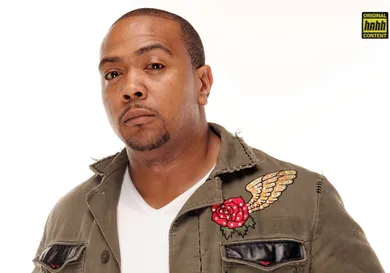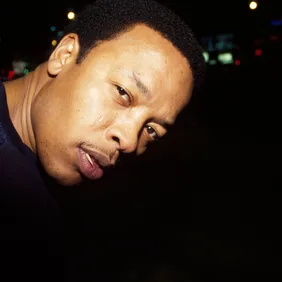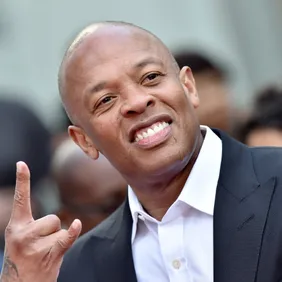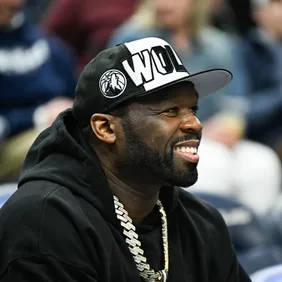The Golden Era has become synonymous with a specific period in hip-hop history. The distinctive soundscapes of the late eighties and early nineties, defined by artists like Rakim, KRS One, Nas, and the Wu-Tang Clan. Foundational producers like Eric B and RZA, who followed in the footsteps of the innovative Grandmaster Flash, elevated sampling into high art. The result was a rugged and raw sonic aesthetic, the byproduct of lifting from music from the sixties and seventies. For many budding New York rappers, Golden Era production encapsulated the cultural climate; the budding tension, the underworld manoeuvers, the violence and the parties alike. To listen to classics from that period is to revisit a movement, and identifying a Golden Era track is hardly difficult for a modern-day fan.
For many who have only recently transitioned into “Old Head Status” -- think late-eighties and early nineties-babies-- the Golden Era was already winding down. As the demographic, the majority of whom are currently in their late twenties or early thirties, reached adolescence, hip-hop appeared to be in itself transitioning. Golden Era qualities began to alter, a trend that may or may not have coincided with the deaths of Biggie, Big L, and Big Pun. Several New York heavy hitters, namely the rising Jay-Z, began moving away from the traditionalist production of his former collaborators Pete Rock, DJ Premier, and Ski. As the new millennium approached, a pair of rising talents by the names of Swizz Beatz and Timbaland became staples of The Jigga Man's Volume series. The former gained notoriety through his work with DMX, having steered the Dark Man from PK’s hellish samples into a cleaner, more futuristic and Atlanta-inspired bounce. The latter gained his through a magnificent body of work with Aaliyah, a young artist widely recognized of hip-pop's most talented voices.
Scott Gries/Getty Images
Over in the West Coast, the post-Death Row era was in full swing. Dr. Dre’s explosive G-funk was in a state of flux, as the good Doctor looked Eastbound toward Nas, Foxy Brown, Nature, and AZ -- a collective known as The Firm. Interestingly enough, Dre spent a brief moment returning to the Golden Era sound, experimenting with quote-unquote mafioso rap for a spell. His former protege Snoop Dogg, freed from the looming presence of Suge Knight, found himself linking up with a New Orleans based Label called No Limit. Fronted by CEO Master P and housing acts like Fiend, Mystikal, and C-Murder, Snoop soon found himself exploring Southern production, foreshadowing a trend that would remain present nearly thirty years later. In truth, it’s fair to say the South reigned supreme during the mid to late nineties, with producers like DJ Paul, Organized Noize, and Mannie Fresh emerging with continuously innovative and influential approaches to beat-making.
To truly dive into a comprehensive timeline of the respective sonic evolutions of East Coast, West Coast, and Southern production trends would be a Herculean effort. It’s simply important to understand that beats were changing at a rapid rate, and the volume of sample-based instrumental were dwindling They weren’t entirely at an end, mind you -- not while RZA and DJ Premier still drew breath -- but it was becoming increasingly commonplace to hear a different type of instrumental across the major outlets. Without streaming, “singles” were destined for a) radio play or b) spins on the dominating music video outlets. As expected, a hot beat was as important as a rapper’s performance, especially considering one outlying factor: label intervention. With more independence than ever before in today’s climate, it’s easy to forget that labels often sought an accessible first-look, one that might appeal to a variety of different demographics. Often times, the beat was that first-impression.
Newsmakers/Getty Images
Perhaps that’s what ultimately led to a cleaner sound. Perhaps it was the work of Mannie Fresh, Swizz Beatz, Timbo, and The Neptunes (more on them later) who brought increased reliance synthesizers into the mix. Perhaps it was the addition of Scott Storch, former pianist for The Roots, into Dr. Dre’s close-knit production circle. It’s unlikely that one single factor steered the course of history. But what cannot be denied is the new millennium brought upon a production renaissance, in which a group of extremely talented beatmakers achieved mainstream ubiquity. You couldn’t turn on the radio or turn to a music-television station without hearing one of their instrumentals, and what’s even more impressive is the fact that they were all so unique in their approaches. Between the years of two-thousand and two-thousand-and four, hereby referred to as The Platinum Era, it was impossible to ignore a handful of the production game’s key players.
By the time the year two-thousand rolled around, Dr. Dre had shaken off his Firm experiment and reinvented his sound with the timeless 2001. Having united with Storch and Mike Elizondo, Dre focused on bringing orchestral elements and darker tonalities into his music. In lieu of sampling, Dre would have his team re-play select fragments. His main arsenal included pianos, foreboding staccato strings, and wisely deployed baselines. All the while, Dre’s percussive arrangements served as an anchor for his west-coast sensibilities. Many may very well crown Dre the reigning king of The Platinum Era, as evidenced by his work with Eminem, Xzibit, Eve, Busta Rhymes, 50 Cent, Mary J. Blige, and The Game. The pioneer of the modern-day dark banger, and one of the game’s most haunting producers of all time.
William Thomas Cain/Getty Images
Like Dre, Scott Storch tended to operate in similar musical realms. As the man largely responsible for lacing Dre’s piano, Storch proved to be an adept pupil capable of realizing grand visions on his own merit. The co-pilot of some of Dre’s darkest gangsta beats, like “Big Egos,” G-Unit’s “Poppin Them Thangs” and “G’d Up,” Storch appeared to move away as his solo chops evolved. Though he seldom operated within the major key, many of Storch’s biggest hits took on a Middle Eastern quality; 50 Cent’s “Candy Shop” and “Just A Lil Bit,” Beyonce’s “Baby Boy,” and Fat Joe’s “Lean Back.” Having wisely spent the first two years of The Platinum Era as an observer, Storch closed the movement out as a bonafide A-lister with no shortage of hits to his name. Tempting though it may be to hit him with Dre comparisons, a quick perusal of Storch’s early solo hits highlight his own distinct musical instincts.
It’s impossible to think about the early millennium without the combined work of Pharrell Williams and Chad Hugo, better known as The Neptunes. The primary catalyst for introducing filthy synthesizers into the landscape, singles like Noreaga’s “Superthug,” Beenie Man, Lady Saw, and Sean Paul’s “Bossman,” and Jadakiss’ “Knock Yourself Out” made for a notably refreshing change of pace. Their work with the Clipse, arguably their finest to date, brought chilling beats like “Grindin” and “What Happened To That Boy” into rotation. Not to mention their ability to flip the script and get romantic, trading in their saw waves for lush and atmospheric synth pads; it’s impossible to listen to Tyler, The Creator’s Igor and not hear the influence of Platinum Era Neptunes. For some context, Chad and P became one of Jay-Z’s go-to producers, a far cry from the mafioso style of yore. To this day, the slinking “La La La” still bangs, and that’s not even touching on the ridiculous beats they laced for Busta Rhymes.
Jo Hale/Getty Images
Speaking of Jay-Z’s trusted beatmakers, the aforementioned Timbaland had already established himself as one of hip-hop’s defining musicians following major looks like "N***a What N***a Who" and "Big Pimpin." Building a repertoire of percussive and glitchy synth beats reserved for the late Aalyiah, Timbo quickly expanded his reach with songs like Memphis Bleek's "Is That Yo Bitch," Ludacris’ “Rollout,” and the insane Jadakiss & Bubba Sparxxx collaboration “They Ain’t Ready.” One of his main staples, and a surefire way of identifying a Timbaland instrumental, is his percussive arrangements. Often quick-tempo and shuffling, unconventional in their timing and seldom tethered to a boom-bap structure, Timbaland’s drums brought a worldly flavor into culture -- a quality made especially evident through his classic work with Missy Elliott, like “Get Ur Freak On” and the (technically 1999) “She’s A Bitch.” Though he tended to hover closely to more melodic artists, Tim’s innovative prowess behind the boards went on to land him placements with rappers like Jay-Z, Obie Trice, and The Game.
Consider that we’ve gone through four of the era’s prominent producers, and none of them sound even remotely alike; the fact that they all achieved commercial dominance on their own merits and never once compromised their sonic integrity is astounding. And while the aforementioned four generally operated within the realms of analog instrumentation and interpolation, Mannie Fresh served as the gap between two disparate timeframes. With his late-nineties work with Cash Money proving to be vastly ahead of its time, Mannie continued to evolve in the new millennium, bringing that Southern Bounce and bling-bling sheen to the mainstream. His beats were often reserved for those within his immediate circle -- namely Lil Wayne, Juvenile, Birdman, and Turk-- but together they helped shape an entire movement. By the time Fresh and Wayne connected for Tha Carter in 2004, the formula had been reached its maturation process to brilliant results.
Ethan Miller/Getty Images
As history often repeats itself, so too do musical movements. Remember that hip-hop began with sampling, a process that involved highlighting “breaks” from disco records and spinning them at parties (the origins of “breakdancing”). Where Golden Era producers were forced to crate-dig out of necessity, limited to the technology and resources at the time, Platinum Era producers were blessed with the dawning of a digital age. In that regard, Roc-A-Fella legends Kanye West and Just Blaze might be considered old souls. Both men built their sounds around the lost art of sampling, though each one had a preferred modus operandi. For a young Yeezy, “soul” was the main ingredient. With Jay-Z’s 2001 classic The Blueprint serving as the primary showcase, Kanye quickly made an impression on nostalgic-sounding cuts like “Takeover” and “Heart Of The City,” both of which featured vocal chops from decades long past. Ye would continue building a repertoire of sampled hits, essentially reinvigorating the process, with songs like Twista’s “Overnight Celebrity,” Talib Kweli’s “Get By,” and his own seminal “Through The Wire.”
Where Kanye West’s entrance into the game felt somewhat reserved, borderline classy, Just Blaze opted for a more bombastic approach. Even his iconic tag (if you know, you can hear it already) mirrored that quality. Like Yeezy, Blaze employed pitched up samples within his beats, occasionally making them the centerpiece of the instrumental -- look no further than Cam’ron’s classic “Oh Boy,” or the Roc Boys classic “What We Do.” Though often employed as the scorer of the more streets-friendly Roc-A-Fella anthems, Just quickly proved himself to be viable in the clubs, never going so far as to compromise his vision. For a while, the Redman and Erick Sermon duet “React” was among mainstream hip-hop’s biggest hits, as was the now-notorious Joe Budden classic “Pump It Up.” Like Ye, one of his staples is to build a song’s concept around his chosen sample, influencing the lyrical content of whichever artist he blesses. Consider “Breathe” by Fabolous or Jay-Z’s “U Don’t Know” as prime exhibits, and two of his most iconic works to date. Perhaps veering closer to unsung hero than bonafide megastar, Just Blaze remained a valuable part of The Platinum Era all the same.
It’s impossible to capture the nuance of an entire time period in one brief essay. Nor is it possible to highlight every key player. But sometimes, especially in an era in which replication remains such a dominant process, it’s important to revisit some of the game’s pioneers. The fact that so many groundbreaking producers were able to coexist, all the while operating within their own respective musical lanes, deserves to be recognized. Especially considering the originality they retained within their craft. If you’ve come this far -- whether you’re a younger fan having heard some of these names in passing or a newly minted “old head” feeling nostalgic -- take a moment to celebrate a truly amazing time in hip-hop. Do you remember The Platinum Era?
Mike Windle/Getty Images
If you liked this, check out:
RIP CD: The Death Of An Ideal Listening Experience
The Significance Of An Album's Title Track
Masters Of Cadence: The Art Of Voice In Hip-Hop







